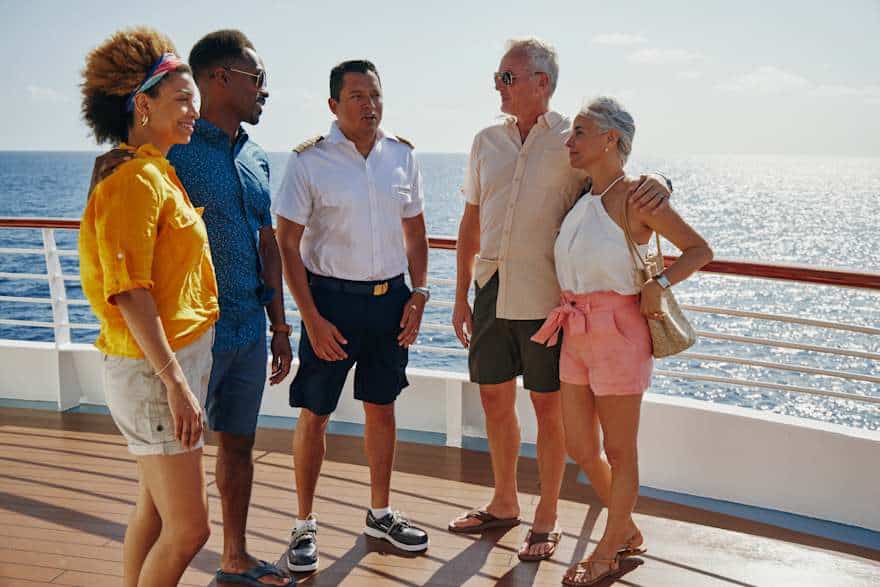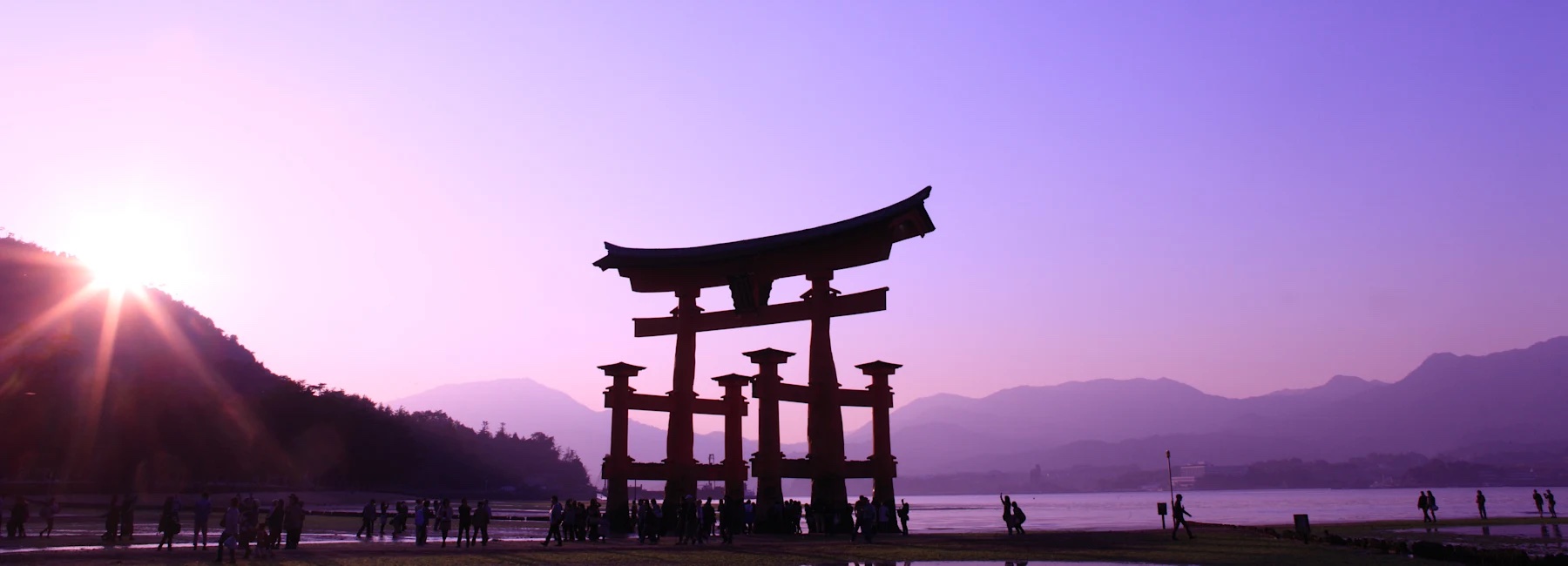For cruise travelers, the Canary Islands are most typically experienced as stopovers on a transatlantic sailing between Europe and North America. And yet, the seven islands that make up the Canaries, an autonomous (self-governing) community of Spain, merit a more immersive trip of their own, says Chris Prelog, Windstar’s president, who, while growing up in Austria, spent winters vacationing on the islands.
“There’s a reason they call these islands Europe’s Hawaii,” Windstar President Chris Prelog. “From black-sand beaches to cities with Spanish and Portuguese influences, it always felt to me like it was everything you could want in a vacation destination.”
Particularly if you make island-hopping easy.
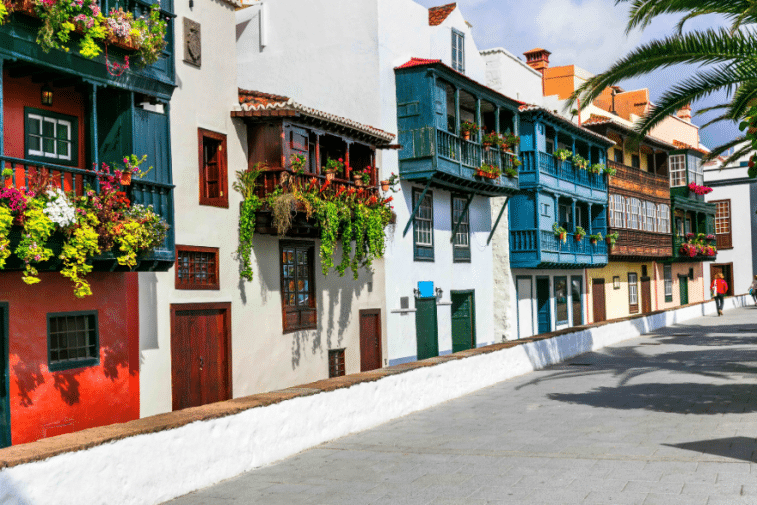
The archipelago consists of Santa Cruz de Tenerife, its capital, and Las Palmas, Gran Canaria, Fuerteventura, Lanzarote, La Gomera and Ferro. Ironically, the islands are actually closer to the west coast of Africa than to Spain; Fuerteventura is just under 70 miles from Morocco’s Cape Juby.
Each one is distinctively different. Tenerife is lush with rainforests while parts of Lanzarote, with its dune fields and black sand beaches, feel like you’ve landed on the moon. La Gomera has a rugged mountain landscape. Santa Cruz de la Palma has a lively and colorful Caribbean vibe along with mountainous volcanoes and, like Lanzarote, thriving vineyards. Madeira, though not technically part of the Canary Islands, is often visited on itineraries in the region.
And here’s a fun fact: the Canary Islands are home to seven UNESCO Biosphere Reserve sites, so chosen for the purpose of conservation, research, education, and development of cultural and biodiversity in environmentally unique locations.
How to island-hop in the Canaries

The hot ticket right now is the 10-night Canary Island Idyll in autumn 2025/winter 2026 onboard Wind Star, the company’s 148-passenger sailing ship. The choice of Wind Star for this route was no accident, Prelog says. “Prevailing winds in the Canaries make a voyage onboard a sailing yacht an extraordinary experience.”
Based from Tenerife, Wind Star calls at islands such as La Palma (Santa Cruz), Las Palmas (Grand Canary Island), La Gomera (San Sebastian) and Lanzarote, along with Madeira (Funchal), which belongs to Portugal.
Getting to (and from) the homeport of Tenerife is easier than anticipated
The Canary Island Idyll itinerary home ports in Tenerife. I discovered the easiest flights from North America are on United Airlines, which now offers nonstop flights in both directions on select days between Newark (EWR) and Tenerife (TFS). If the nonstop schedule doesn’t work for you, there are daily one-stop flights from most major North American airports on American, Lufthansa, Swiss, and British Airways. There’s even an option to fly Icelandair with a Reykjavik stopover before ending in Tenerife.
Check out our tips on what to do and see in the Canary Islands.
Santa Cruz de Tenerife
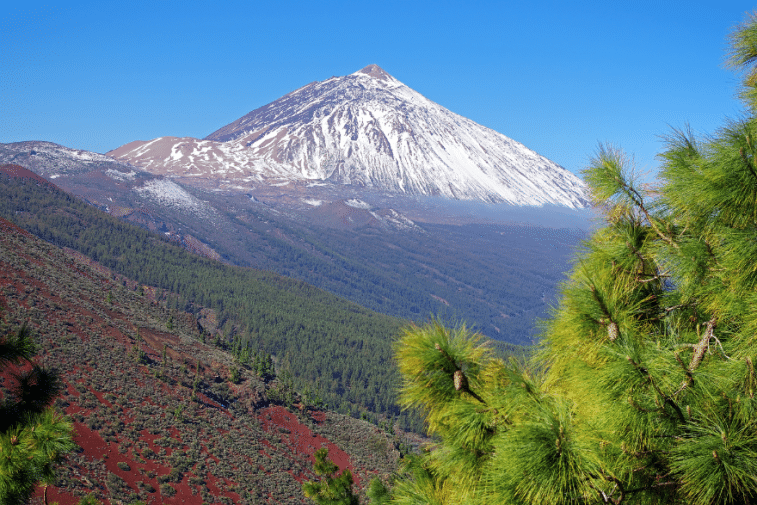
Tenerife is the largest, most populous and best-known of the Canary Islands, famous for its beaches, nightlife and the highest peak in Spain, Mount Tiede. Santa Cruz (meaning holy cross in Spanish) serves as the capital of the island and co-capital of the Canary Island archipelago. With a population of over 200,000, it is a bustling city, with an old town area that features colonial Spanish architecture, shops and eateries.
Best-known sights:
Whale and dolphin watching are popular shore excursions in Santa Cruz, but scenic drives rank highest for land-based exploration. Mount Teide dominates the skyline from almost anywhere on the island, and a visit to the Teide National Park gets you even closer to the volcano’s summit and its massive lava fields. There’s a cable car in the park to get an even better view.
For those who love markets, Our Lady of Africa Market, known as La Recova, features three multistory courtyards overflowing with food, wine, flowers and local goods.

Wonderful surprises:
Prelog admits that Tenerife was his second-favorite island in the Canaries (read on for his absolute fave), primarily because of the mountain scenery and hiking. While many of the 67 trails found in the Teide National Park are listed as difficult, one of the most scenic is Roques de Garcia. It’s about a 90-minute circuit trail, listed on most maps as easy to moderate, that lets you stretch your legs and feel like you’ve truly explored a bit of the island.
Bottom line:
Because Tenerife is often where you say hola or adios to the Canary Islands, spare time in port may be limited. It’s easy, though, to plan a pre- or post-cruise stay here. Windstar’s package incorporates a stay at the Iberostar Heritage Grand Mencey Hotel.
More info:
The Canary Islands Tourism website has a large section dedicated to all things Tenerife. Details about the Mount Teide cable car are at Volcano Teide.
Lanzarote
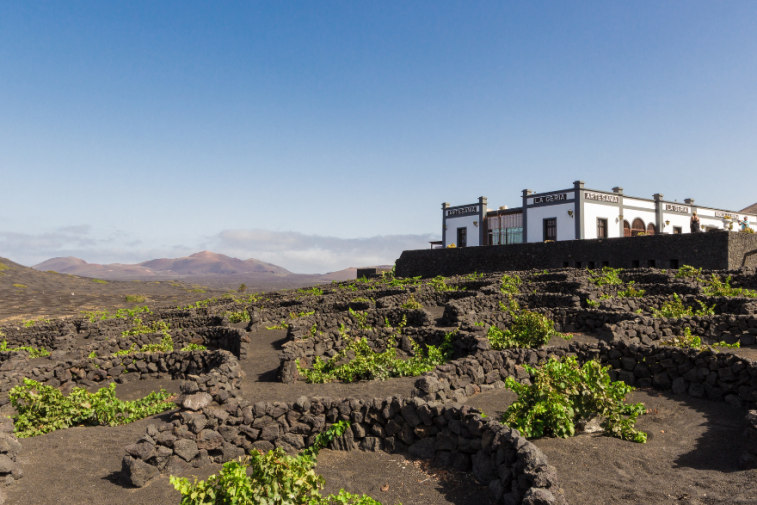
Lying just 78 miles from the coast of the African continent, Lanzarote is the third-most populous island and the fourth-largest of the Canaries. Its immense red and black volcanic landscapes give it an other-worldly feel. The capital city of Arrecife is home to only 64,000 residents.
Lanzarote is Prelog’s favorite island in the Canaries. When I asked him why, he was uncharacteristically at a loss for words. “It has a desert flair,” he finally said. “With the white buildings and the dunes, it’s very different. Variety is what makes the Canary Islands a perfect vacation, and with this itinerary, we can take you around to sample all the differences.”
Lanzarote is the first destination in the world to receive a Biosphere Responsible Tourism Certificate. That means it is not only good at protecting its uniqueness, it’s also developed a plan for sharing it responsibly.
Best-known sights:
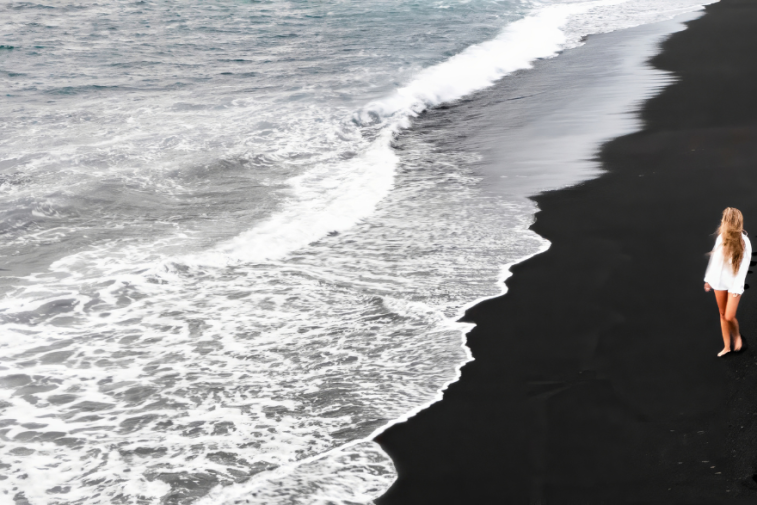
You won’t find the lush green mountains and banana groves you will experience on Tenerife and Madeira. Lanzarote is stark. The landscape is what brings people here, mouths gaping as if they just landed on Mars. You can still enjoy beaches here, they come in both black and gold. Ride a camel in the dunes if you choose or simply take in the harsh beauty of it all.
Wonderful surprises:
As impossible as it seems, there are vineyards. Grape cultivars unique to the island are grown on the rocky lava fields close to the ground, much the same as you’ll find on Santorini. In fact, the visual similarities between Lanzarote and Santorini really suprised me (though the two islands really do feel quite distinct from one another).
And Lanzarote is not a huge cruise port. On some of Wind Star’s port days in Arrecife, it is the only cruise ship in port. On others, only one other ship is also docked.
Bottom line:
Lanzarote has a memorable desert beauty you won’t find on the other Canary Islands. Plus, there are things you can see and do here you won’t find elsewhere on cruises to many other regions in the world. Whether you aim to ride a camel, go four-wheel adventuring, or sit and sip volcanic wine, this is not a port of call you want to miss.
More info:
Look for details about Lanzarote on the Hello Canary Islands website.
San Sebastian de La Gomera

The island of La Gomera is the second-smallest, and one of the least-visited, of the Canary Islands. Its 142 square miles feature soaring volcanic mountains that provide the island with black sand beaches. The upper altitudes of the central island are dominated by the misty Garonjay National Park. The ship ports in the capital city of San Sebastion de la Gomera, with a population of just under 10,000. The city’s history is interwoven with the expeditions of Christopher Columbus.
Best-known sights:
Striking volcanic basalt formations, hiking and waterfall spotting in the national park (a UNESCO World Heritage Site), and the black sand beaches are the primary things to experience on La Gomera. San Sebastian Beach is the most popular near the port, with restaurants nearby. Most tours planned through the ship are of the sightseeing variety, a few with short walks in the national park. Choosing a short sightseeing tour leaves you free to explore a bit of the island on your own or venture to the beach for the rest of the day.
“There’s a reason they call these islands Europe’s Hawaii,” says Windstar President Chris Prelog. “From black-sand beaches to cities with Spanish and Portuguese influences, it always felt to me like it was everything you could want in a vacation destination.”
Wonderful surprises:
If you are looking for the perfect souvenir from La Gomera, shop for palm honey or guarapo. Another possibility is wine produced from the Forastera Gomera grape. History lovers can explore the Columbus House Museum, where Columbus stayed before setting out across the Atlantic, and the Torre del Conde and Church of Asuncion, both from the 15th century.
Bottom line:
San Sebastian appeals to nature lovers and those who enjoy dramatic scenery. It’s a highly walkable island, with more than 370 miles of trails and paths.
More info:
The La Gomera Canary Islands Tourist Information site has a wealth of information, including walking tours created specifically for cruise ship passengers.
Santa Cruz de La Palma
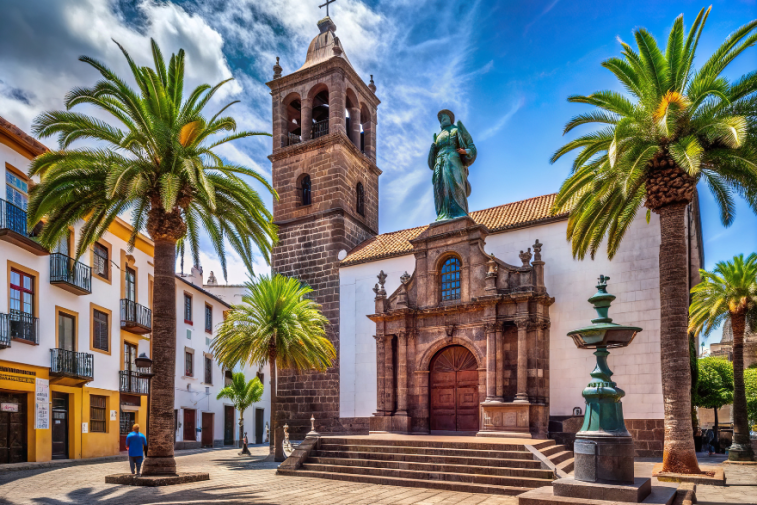
Santa Cruz serves as the capital and primary port city of the island of La Palma. It’s a relatively small city rich with Spanish history (we love the Plaza de Espana, anchored by the Iglesia Matriz de El Salvador). The Naval Museum (Museo Naval) has a replica of Columbus’ Santa Maria, and the cobblestone streets of the city’s historic center (walkable from the cruise port) are lined with examples of colonial Spanish architecture.
Best-known sights:
Can you ever tire of the black sand beaches? During winter, you can enjoy the warmth of the sand even when air temperatures are moderate. Water temperatures average in the low 70s, making it comfortable for a quick dip. The nearest beach to the cruise port is Bajamar. Also, La Palma is well known for its volcanic vineyards.
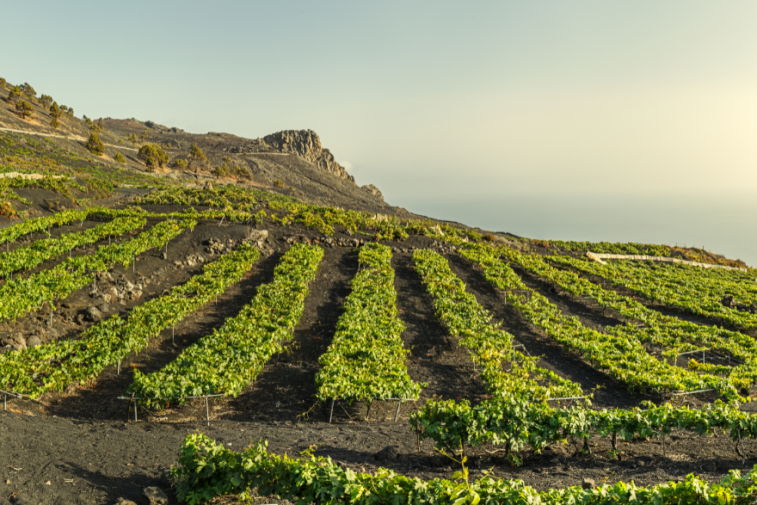
As with other islands, viewpoints or roadside lookouts are the best way to take in the island’s spectacular scenery, any driving tour should include several of the more prominent viewpoints. The island also has a wine-producing region near the caldera.
Wonderful surprises:
Tranquility is a word not often applied to tourist areas, but it sure does apply to La Palma and its multisensory experiences. One of the best places to find such tranquility is to venture north from Santa Cruz to Charco Azul, or Blue Pool. It is one of many pools in the Canaries that combine nature’s shoreline with a bit of human ingenuity to create a space where swimming in the sea is both safe and tranquil. It’s about a 40-minute taxi ride from the cruise terminal. The facility has changing rooms, showers and even a solarium.
Bottom line:
La Palma is an island with a slower pace, the kind of destination where you can wander a bit, maybe sip some local wine, and simply take in the beauty of the place. There are also plenty of tours for those who want to see the interior of the island and learn about the culture and history.
More info:
The Visit La Palma page on the Turismo de Islas Canarias website is filled with information about activities, trails, viewpoints for taking in scenery, and places of historical significance. The official tourism site of Spain also has an inspiring page on Santa Cruz.
Las Palmas de Gran Canaria
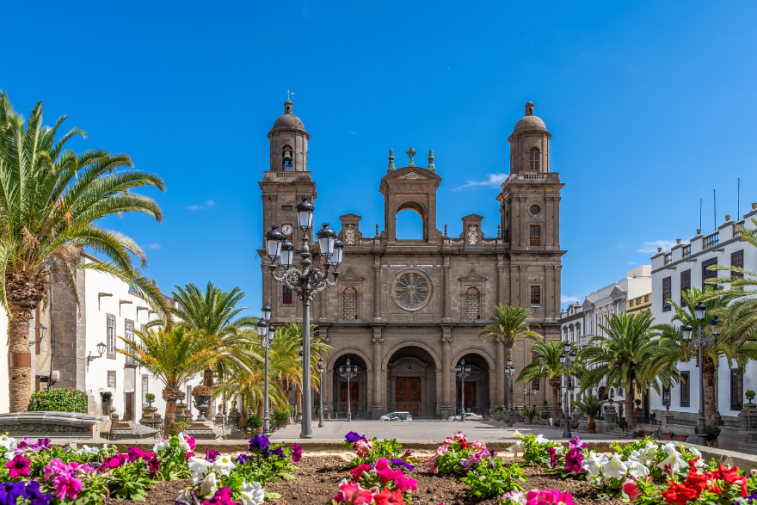
Las Palmas is the provincial capital, and the co-capital of the Canary Islands along with Santa Cruz de Tenerife. Population of the city is near 400,000 — almost half of the island’s population of over 800,000. The island is called the “little great continent” for the diversity of its landscapes, from beaches to pine forests.
Best-known sights:
Gran Canaria is known for its beaches and golf courses. The best beaches are in the touristy southern part of the island and are accessible via taxi. Las Canteras, however, is an urban beach not far from the cruise port in Las Palmas. Tours to the caldera and to one of several botanical gardens are also popular. Museum buffs have a handful to choose from, right in Las Palmas. El Museo Canaria provides a historical look at the island and its settlers.
Wonderful surprises:

The stunning Plaza Mayor de Santa Ana, dominated by the Cathedral of Las Palmas, is worth the cost of a hop-on, hop-off bus ticket. There are cathedrals in other cities in the Canaries, but this was the first church built in the islands after the Spanish invasion. Its architecture is a blend of Gothic, Neoclassical and Canarian — including pillars that mimic palm trees. The sand dunes on the island’s southern coast are a delightful surprise.
Bottom line:
Las Palmas is a large, busy city, with all the flair of any Spanish port. In addition to scenic landscapes, this populous island is known for archeological and historical treasures.
More info:
The Gran Canaria Tourism website and the Gran Canaria page on the Canary Island Tourism website both offer detailed information for visitors.
Madeira’s Funchal
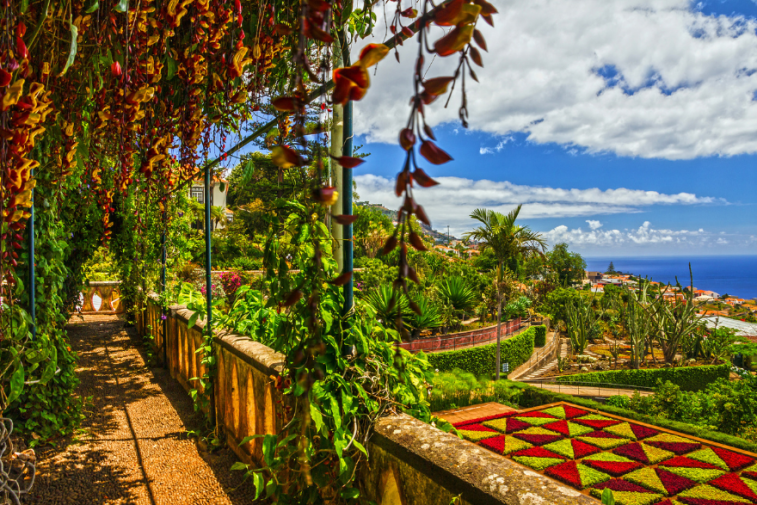
Situated roughly 250 miles north of Spain’s Canary Islands, Madeira is an autonomous region of Portugal, comprised of four islands. The capital of Madeira is Funchal (on the island of Madeira). This energetic city hugs the coast and mountainside of Madeira’s highest peaks (Pico Ruivo reaches 6,106 feet above sea level).
Best-known sights:
One of the most unusual activities here is a toboggan ride. Picture sitting in a basket on wooden skids while two carreiros push and steer the wicker sled down a steep winding road between the villages of Monte and Livramento. The 10-minute speed ride is not for the faint of heart, but definitely fun to watch. There’s a cable car to Monte with a stunning view of the city and coastline a short walk from the port.
The cable car is also an option for visiting the Monte Palace Madeira Tropical Garden, a botanical garden located in Funchal, Madeira, but because the garden meanders down a very long slope, a better option is a taxi that drops you at the entrance then picks you up at the bottom exit two hours later. Don’t miss its oriental gardens, the Monte Museum for contemporary art, and the wildlife, such as flamingoes, that wanders throughout the property.
Wonderful surprises:

For a break from the city crowds, consider a visit to the charming fishing village of Camara de Lobos. The colorful village has small markets for shopping and charming cafes for a sip of Madeiran wine or a Portuguese beer. For a market closer to the port, the Mercado dos Lavradores is walking distance, and it is everything you’d expect to find in a European market — food, souvenirs, spices and local wine. The mercado is conveniently located next to the shopping area of Funchal’s old town, where you can also shop for shoes or sample some delicious gelato.
Bottom line:
Madeira is fast-paced and loaded with things to see and do. It has something for almost everyone who visits, and Prelog says that even a week in Madeira might not be enough to see it all. The best advice here is perhaps to squeeze in as much as you can, then be prepared to enjoy the beauty of the island from the deck during sailaway.
More info:
The Visit Madeira website has an incredible amount of information, including festival schedules and folklore as well as lists of monuments, churches and wineries.






















